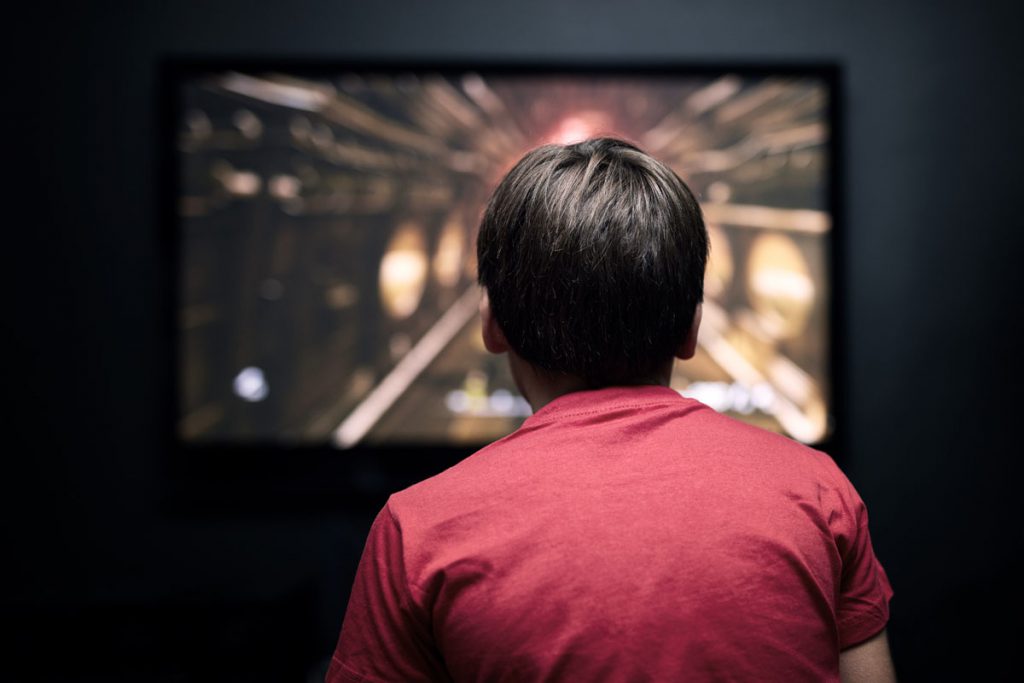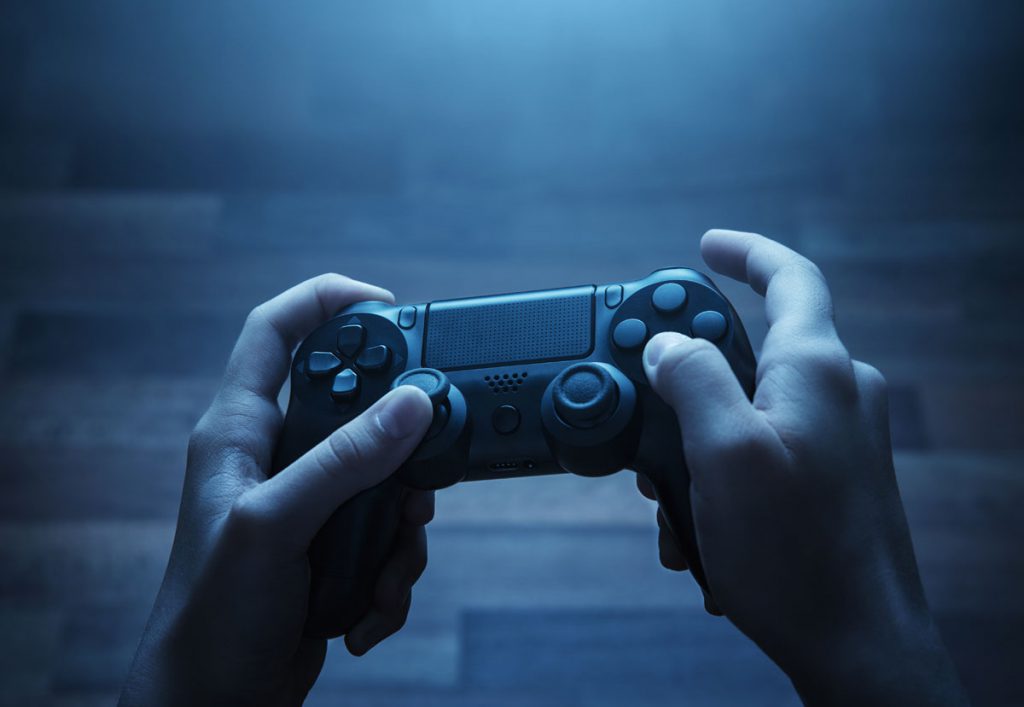Those hooked on video games and social media often struggle with underlying issues like depression and anxiety.
By Larry Urish
Would you hesitate to call 911 if you spotted a teen or tween in your neighborhood shooting heroin? What if this teen was not doing drugs, but spending hours upon hours swiping a finger across their smartphone—texting, surfing the web, watching videos or playing a digital game?
While you’d never call the police to report anyone using a phone, it’s important to know that gaming can be as addictive as hard drugs and negatively affects millions of people worldwide. In fact, the World Health Organization added gaming disorder to its International Classification of Diseases in 2018, defining the condition as giving priority to video games over other daily activities and interests for at least one year, despite the negative consequences of doing so.
Notably, the problem may be more pronounced this time of year, when kids often receive video games and other electronic devices as holiday gifts and spend more time indoors during the shorter, colder days.
A Deadly Dilemma
In November, a 17-year-old in Thailand died of a stroke after spending the entire night gaming. While that’s halfway around the world, gaming addiction is a problem that’s right in our backyard as well. “One local teen was gaming 10 to 12 hours a day,” says Dr. Sina Safahieh, a child and adolescent psychiatrist at Hoag Memorial Hospital Presbyterian’s Pickup Family Neurosciences Institute. “When his dad took away his Xbox, the kid tried to jump out of his bedroom window.”
At its core, gaming addiction is biological in nature. “Gaming lights up the brain’s pleasure centers that are associated with sexual gratification and intoxication, just like hard drugs,” explains Jerry Weichman, a clinical psychologist and adolescent specialist at Hoag. “It activates dopamine, serotonin and norepinephrine.”
More than 2.5 billion people worldwide play digital games, and an estimated $152 billion will be spent by the end of this year on gaming-related products, according to the gaming analytics firm Newzoo. A 2019 census by Common Sense Media, a nonprofit that rates movies, books and technology for families, reports that U.S. teens average more than seven hours a day on screen media, for entertainment purposes only.
“[Chronic gaming] takes away from schoolwork, which impacts their future,” Safahieh says. “Gamers are likely to be more sedentary, many gain weight and they don’t develop social skills.
“Gaming addiction differs from other screen-related problems in that kids are actively engaged in virtual worlds,” Safahieh adds. “This reinforces the brain’s pleasure circuits. When that happens, the addiction becomes harder to break. At least with other screen-related problems, the kids are socializing.”
Another problem, Weichman notes, is that kids often use the same digital devices for both schoolwork and gaming. “I’d rather have my kid lug around a 50-pound pack filled with books and wind up with scoliosis than wind up a gaming addict,” Weichman says.

Warning Signs
Gaming addiction often serves as an indicator of deeper underlying issues, such as depression and anxiety. “There’s nothing wrong with you if you have a mental health issue: You’re human,” Weichman says. “[But] letting kids numb out their problems through gaming isn’t the answer.”
Depression and anxiety among local teens and tweens has been rising at an alarming rate. Orange County’s suicide rate jumped 45% compared to an average, national increase of 22% between the three-year periods of 1999 to 2001 and 2011 to 2013. For teens, the rate was 29% in OC, compared to 22% statewide. According to Safahieh, there were more teen suicides in OC in the first three months of 2019 than all of last year. In fact, suicide is the second leading cause of death in OC for 15- to 24-year-olds.
“There are many factors behind this,” Safahieh says. “They have a lot of stress, both academic and financial. Social media—constantly trying to fit in online—is a big problem. Many of these kids are really suffering.”
Sometimes those grappling with these issues turn to the alternate reality of video games as a means of escape. They may be fatigued after gaming most of the night for days, or even weeks. They may also seem depressed or cranky whenever they can’t play, then appear at ease when back in their own digital universe. Parents may discover that their children have been lying about how often they’re gaming, or hiding other devices to get their fix.
Safahieh notes that addiction is often identified when a teen’s academic and social functioning is impaired due to excessive game play. This can sometimes escalate to a teen becoming violent or threatening suicide when their game is taken away.
“Some parents have said that trying to take an addicted gamer away from his or her device is like trying to take meat from a tiger,” Weichman says. “They’ll sneak around looking for devices like a crack addict.”

What To Do
To help prevent addiction, parents can set limits on screen time, while phones and other gaming devices can be moved out of their child’s bedroom at night. According to Safahieh, most kids should not be playing video games for more than an hour or two a day. Parents can purchase any number of apps that set time limits on gaming, and they can serve as role models by limiting their own digital activity.
These young adults can also be encouraged to try a new hobby, join a club at school or anything else that will reduce the desire to enter their digital world. Face-to-face social interaction, school and physical activity should always come before gaming.
However, if push comes to shove, “Parents should take their kid’s game away, period,” Weichman says. “Set clear boundaries and be firm about it.” He adds that an absence of clear, strong boundaries goes far beyond gaming. “You’re going to train your kids, or they’re going to train you,” he says.
When the addicted child needs professional help, “They should see a therapist who’s a straight shooter; someone who tells them the truth,” Weichman says. “[Both parents and therapists need to] find out what’s going on behind the gaming addiction.”
In addition to therapy, there’s a local program that teaches coping methods and other skills. ASPIRE, or After School Program: Intervention and Resiliency Education, is a nearly 4-year-old intensive outpatient program at Hoag Hospital in Newport that has helped teens deal directly with gaming and social media addictions as well as other related issues. During the program, adolescents ages 13 to 17 meet four times a week for eight weeks. ASPIRE teaches stress management, interpersonal communication, resiliency, mental health issues and more. Headed by Safahieh, the program counts as five units of elective school credit for participating students.
The 14-year-old daughter of Newport Beach resident Sarah Johnson went through the ASPIRE program to combat her social media problem. (Safahieh stresses that social media and other screen addictions are remarkably similar to gaming addiction.)
“She threatened to [harm] … herself if we tried to set limits. She finally did,” says Johnson, whose name was changed to protect the family’s privacy. “And to feel more popular, she was buying Instagram followers by giving them gift cards. We were desperate to get help.”
In the ASPIRE program, “Both she and my husband and I learned some great communication skills,” Johnson says, noting that this included “how to de-escalate a situation and different ways to stay calm in the moment. It was really helpful.
“Halfway through the program, we learned that our daughter has more serious issues. We found this out sooner, thanks to the program.”
Johnson also values the support received through the program and says that “ASPIRE showed my husband and I that we weren’t crazy when others said she was just going through a phase. That alone was really helpful.”
How to Help
If you feel that your teen or tween may have a gaming addiction, here’s some advice from local experts.
- Talk to your child about the issue.
- Limit total screen time (that isn’t school-related) to only an hour or two per day.
- Move devices out of the child’s bedroom at night.
- Encourage your child to be physically active and spend more time outdoors.
- Help your child to develop a new hobby or resume an old one.
- Encourage face-to-face socializing.
- If the problem escalates, take away all gaming devices and set clear, firm boundaries.
- Seek help from a therapist to address underlying issues, such as depression and anxiety.
- Contact Hoag Hospital’s ASPIRE program for help. (www.hoag.org)






